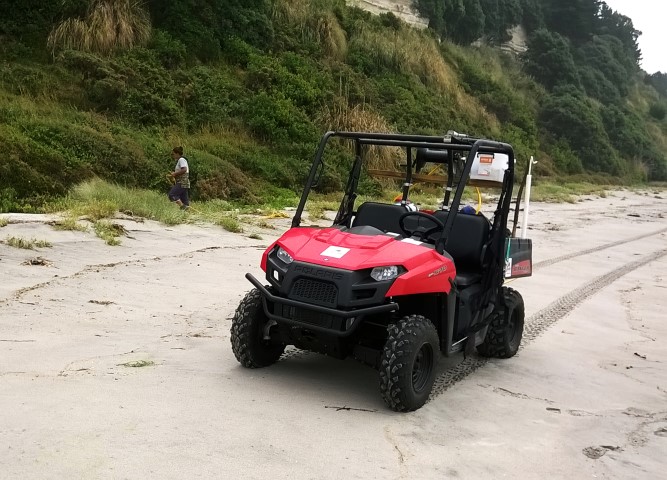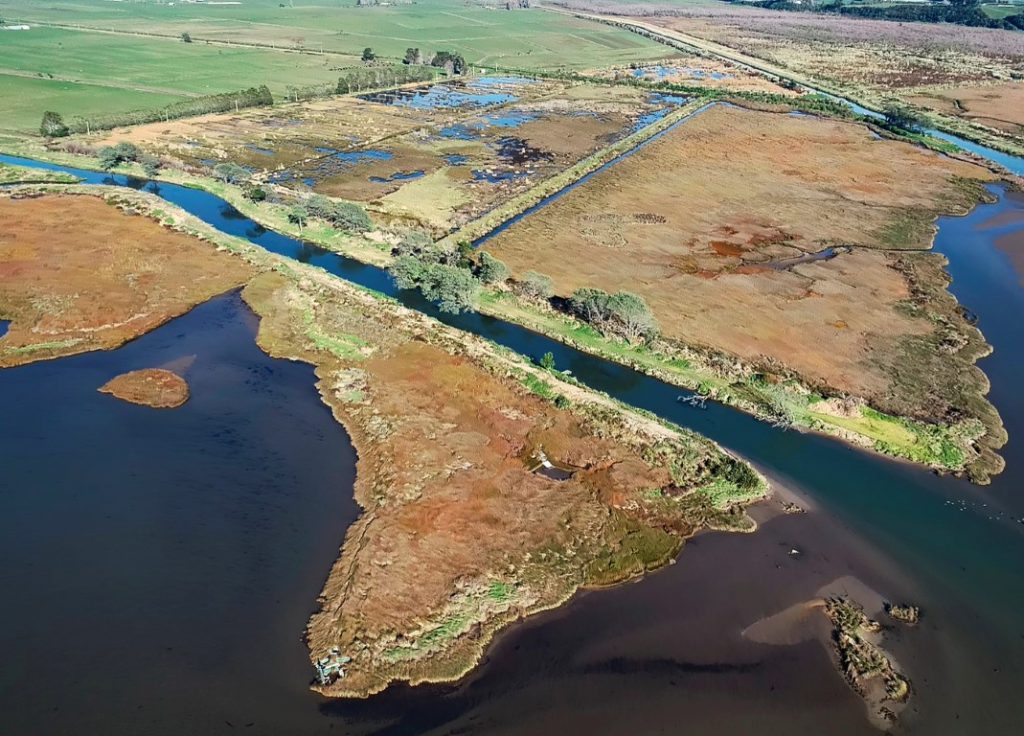Our History
Maketu
Maketū is a small coastal village in the middle of the Bay of Plenty. It has a mixed Maori/Pakeha population who work well together with strong links, both cultural and economic, to the sea and the harbour. The harbour is also known as Ōngātoro after Ngātoro-i-rangi – the priest and navigator on the Te Arawa Canoe, which arrived here some 800 years ago.
As well as being the home of Maketū Pies, and Masterchef winners Kasey and Karena, Maketū is also popular with a wide range of shorebirds and seabirds including red-billed gulls (Larus novaehollandiae), black-billed gulls (Larus bulleri), NZ dotterel (Charadrius obscurus), royal spoonbills (Platalea regia) and variable oystercatchers (Haematopus unicolor).
MOWS History
In 2008 a small group of villagers got together to do something to protect the colony of New Zealand dotterel which live on the tip of the Maketū Spit. In the first season we had little opportunity to do more than erect a simple fence and ask people to stay out of the nesting area.
We quickly realised that protecting the dotterel alone was not really an option, and that we needed to implement a much wider plan to help restore the ecological integrity of the spit. This would ensure that not just the dotterel were secure, but all the other native animals and plants that make up the natural ecosystem.
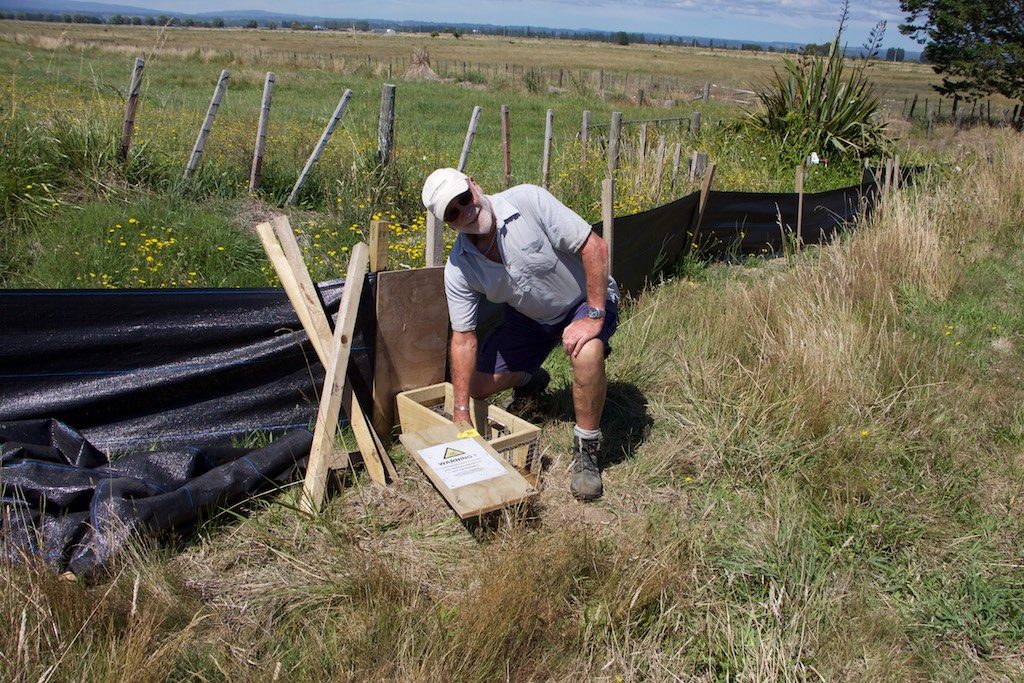
In our second year of operation we started a pest control programme to get rid of the unwanted, introduced mammals, and also to remove the introduced plant species that were invading the spit and changing its nature. Chief among these were pampas grass, gorse, radiata pine, boxthorn and tree lupin. During the winter of 2009 we started running working bees on the spit collecting an enormous amount of rubbish and started the removal of pampas and gorse.
The following year we started to develop a Biodiversity Management Plan (BMP) for Maketū spit. This included a biodiversity survey being carried out by Dr. Peter Maddison as part of the BMP, which discovered two species new to science; a spider and a beetle. This gave us an indication of how little research had been done on the sand dunes in New Zealand, and how important this ecosystem is, as so much of our coast is being consumed by urban sprawl.
In 2011 we initiated a planting programme, which was initially confined to native grasses on the fore dune. However, we have since brought in specialists working with the Dunes Restoration Trust of New Zealand, who ran a study on the spit to work out which native species are best for the back dune. This was part of a national study funded by the Ministry for the Environment.
In the same year, we set up a Biodiversity Management Plan (BMP) to cover all aspects of the ecological restoration of Maketū Spit, this was a 5 year plan funded by Regional and District councils, and DOC. The plan was renewed in 2016 and has been a great success.
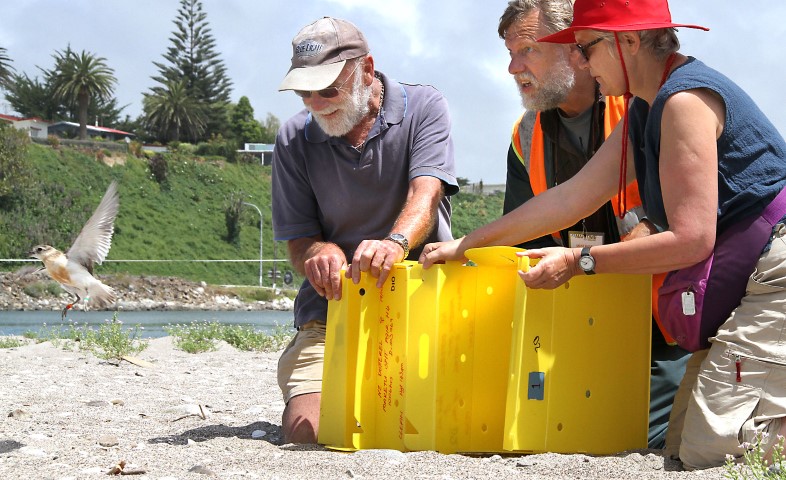
By now things were looking very positive for the dotterel and other species on the spit. And then the MV Rena ran aground on Astrolabe Reef, just 12 km off the Maketu coast.
A week later the beach in front of the dotterel habitat received a heavy dose of oil. Fortunately, most of it was washed away within 24 hrs, but as a precautionary measure, 10 of the 12 breeding pairs of dotterel were taken into captivity to rehabilitate them until it was safe for them to be returned to the area. A few oystercatchers were lightly oiled, but survived, and while unfortunately 6 of the captive dotterel died in captivity from the lung disease, aspergillosis’, the rest were released 1-3 months after the disaster.
MOWS was part of the clean-up and recovery effort from day one, and the heavy fuel oil did not prevent volunteers from keeping up the pressure on pest species on the spit.
The next year we received additional funding from WWF New Zealand and the Ministry of the Environment Rena Recovery programme, to enable us to handle the increased workload, and we set up a second BMP to cover Dotterel Point in Pukehina.
We organised the spraying of pampas along the verges of Ford & Maketū Road, and also received a grant from the Environment Enhancement Fund to help remove the wattle trees, and to replant the area with native species.
Two new signs were created in October 2012 depicting the ecology of the spit and MOWS work. One is situated at the monument reserve by the Maketū surf club and the other at the Kaituna cut carpark.
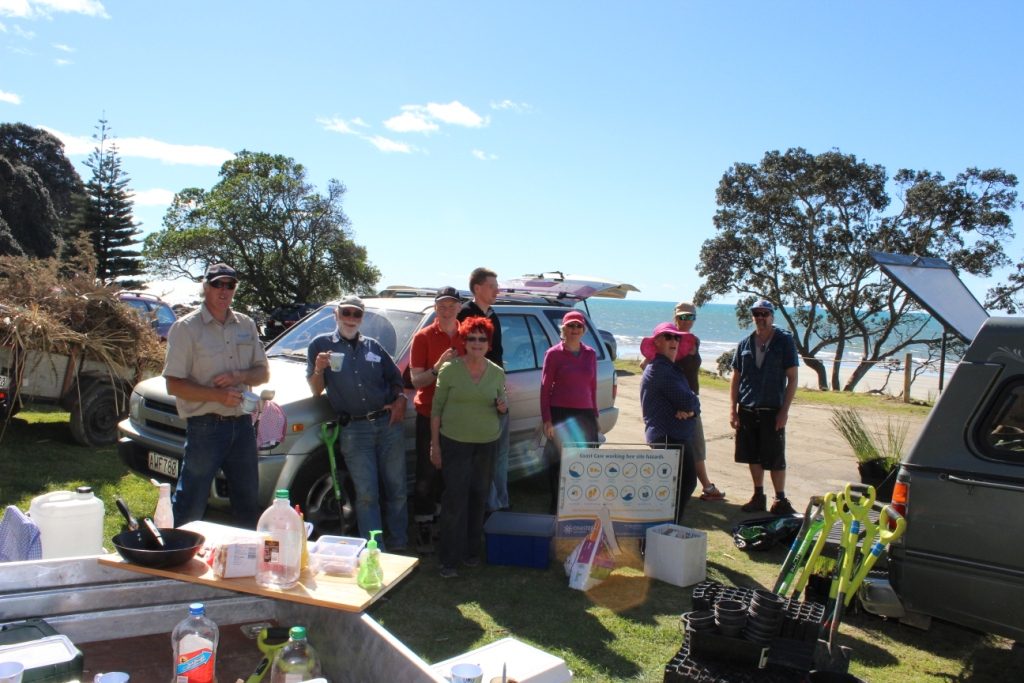
In 2013, following a “Big Dessert Night” for Earth Hour organised by Envirohub Bay of Plenty, local community members made the pledge to start restoring Newdicks Beach. We started by removing invasive weeds and creating a new sand dune in front of the car park, to help protect it from further erosion.
MOWS set up a BMP project for Newdicks beach, and in May 2014 we held a working bee to plant the dunes and remove invasive plants like boneseed. We even trialled planting native ice plant in the banks. We had a great turn out with 20 people there on the day! Thank you to Coast Care for their ongoing support.
With funding from MSC RENA recovery fund, MOWS bought a Polaris Ranger ATV in 2014 to aid working bees and spraying. Everyone loves it, and it has become affectionately known as ‘Muffin’!
In 2015 Waihi Estuary Wildlife Management Reserve was added as a new BMP, and work began there to remove wattle trees and pampas. We also started to clear and replant the hillside on the road to Newdicks beach, known to MOWS as ‘Big Slope’!
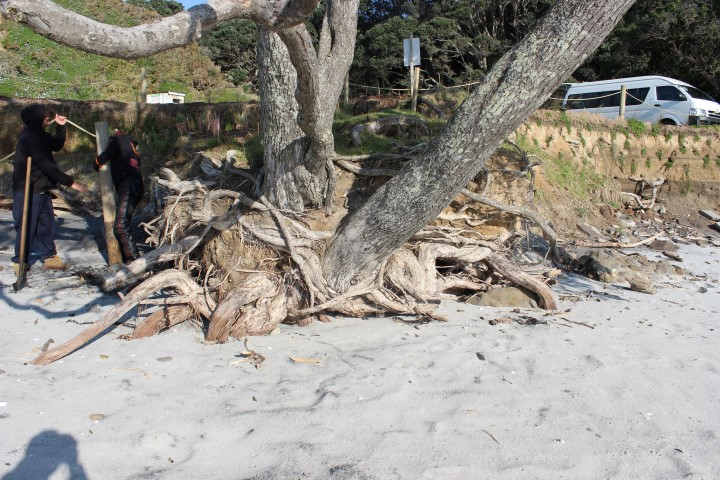
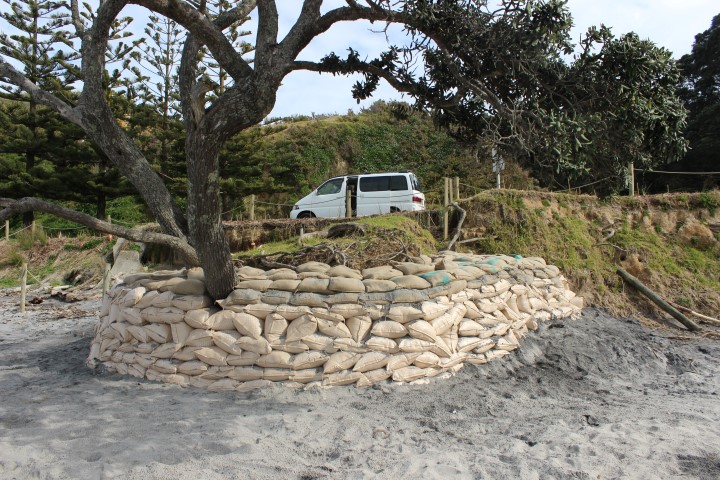
After Cyclone Pam swept through in March 2015, the pohutakawa at Newdicks beach was looking rather worse for wear, and in danger of being lost for good. Following a great deal of hard work by volunteers using a huge number of sandbags, it is now hopefully stable enough to weather more storms.
As well as our environmental restoration work we also run a very successful education program in local schools. We have regular working bees to plant native species and clean up our beaches, and we carry out ecological contract work as a way of providing employment for local people and revenue for our ongoing conservation work.
We run occasional training courses to allow our members and work crew to gain qualifications and take on more skilled work for MOWS. Thanks to Drive Zone for courses in Chainsaw and LUV use, and to Eddie Biesiek for running the Approved Handler of Agrichemicals.
We are always on the lookout for new volunteers to help us in our continuing work. Please see our ‘Volunteer‘ page for information on how to get involved.
